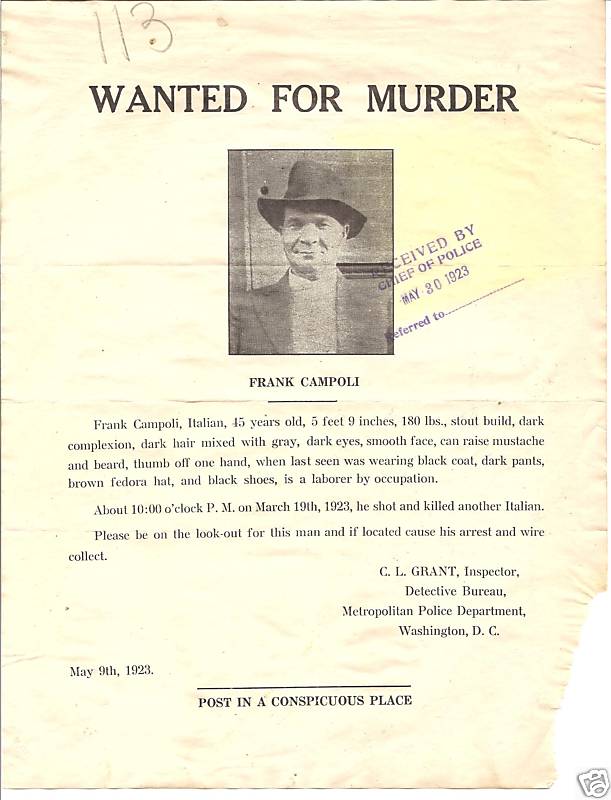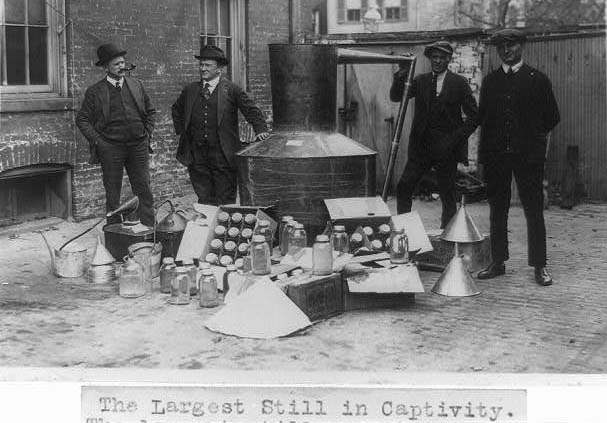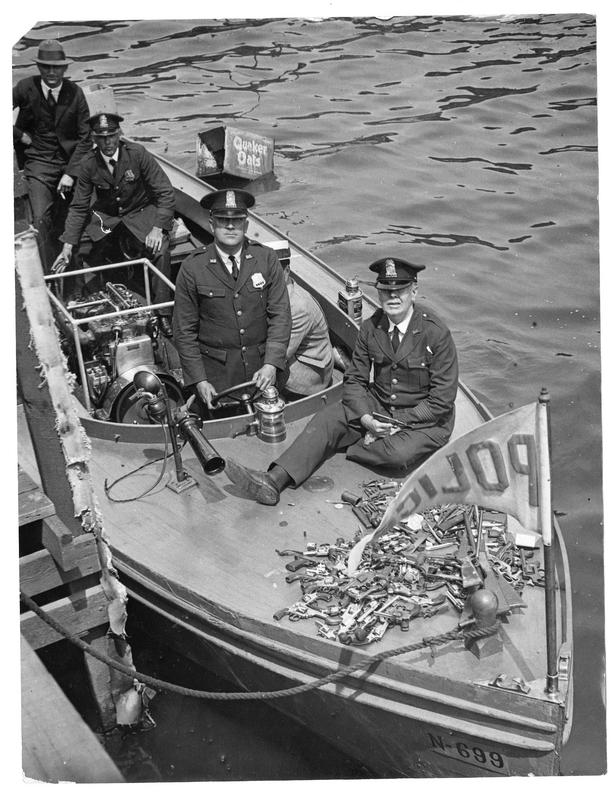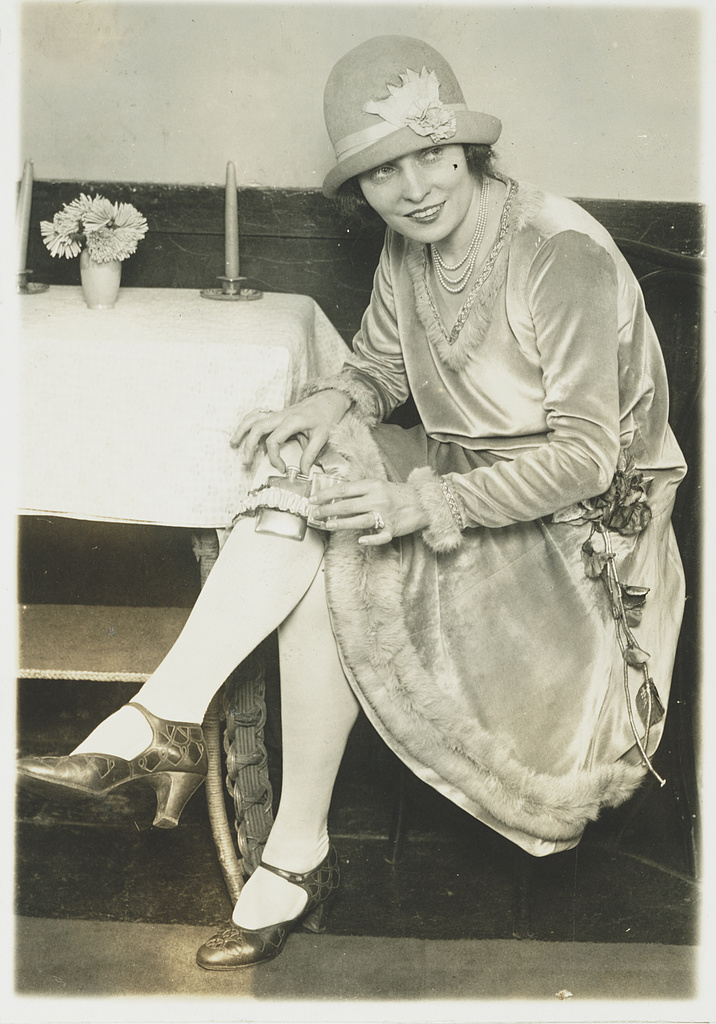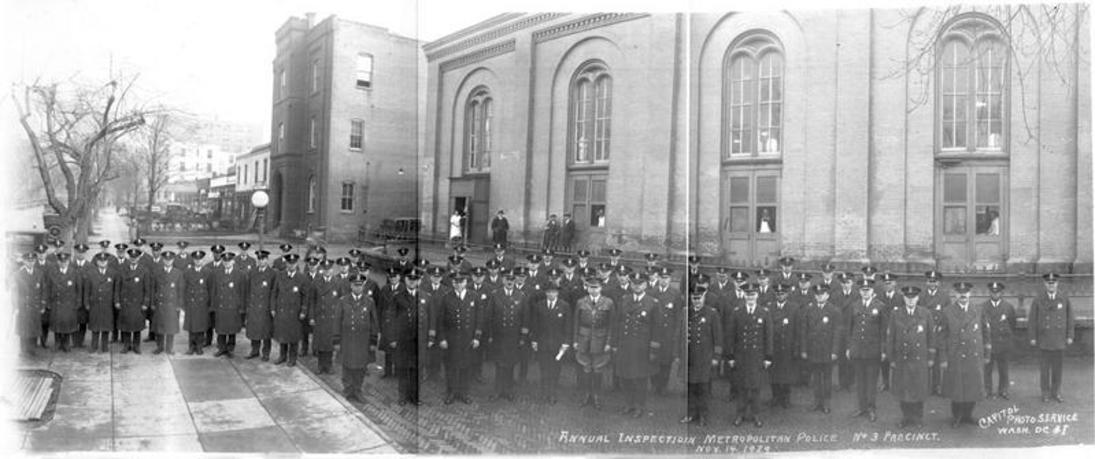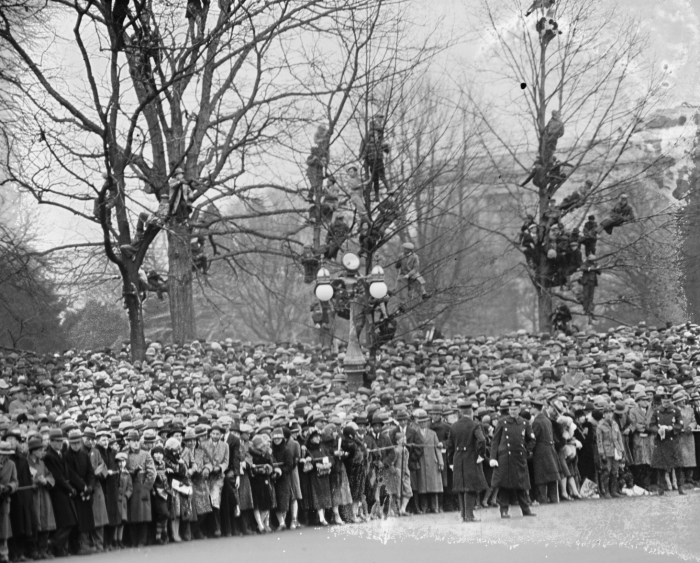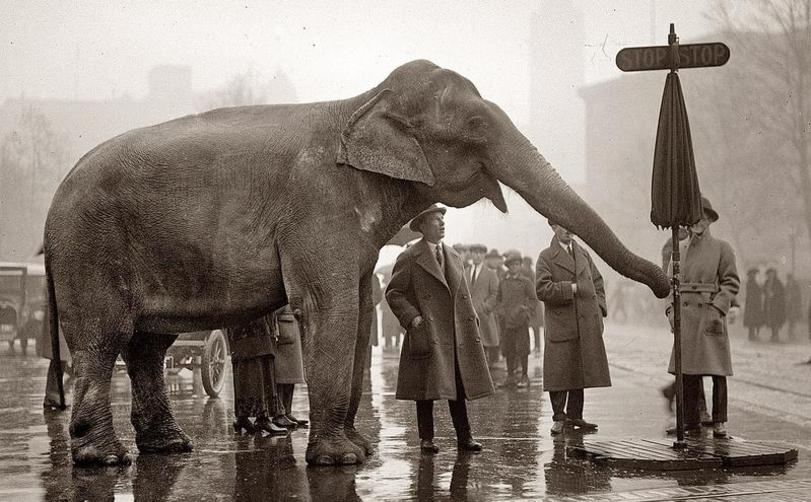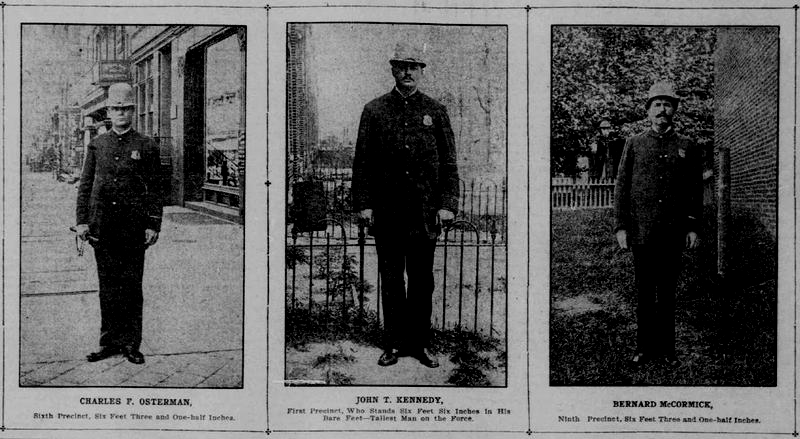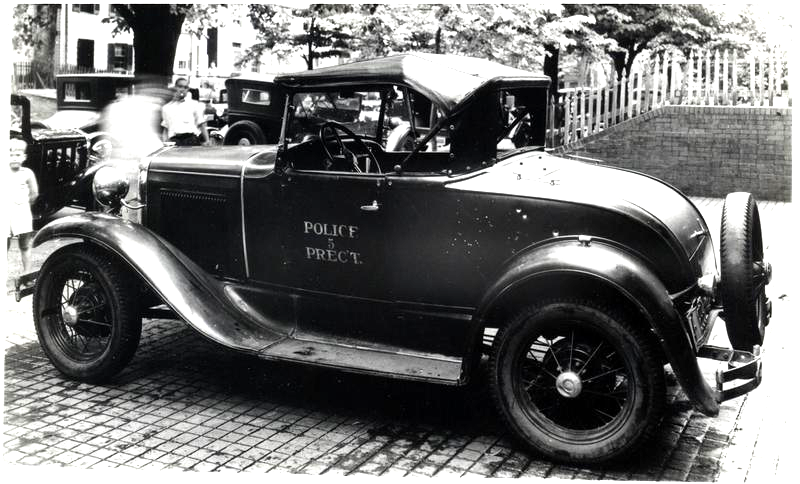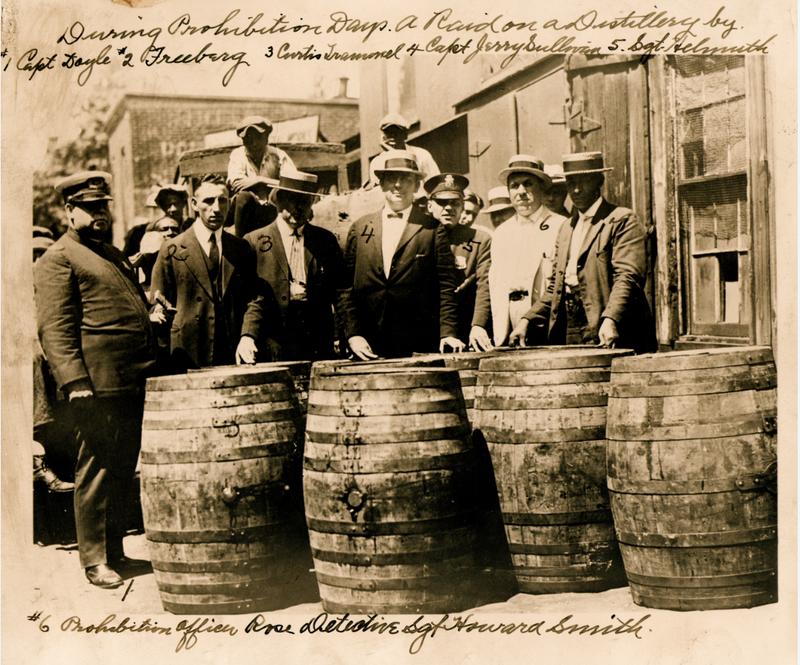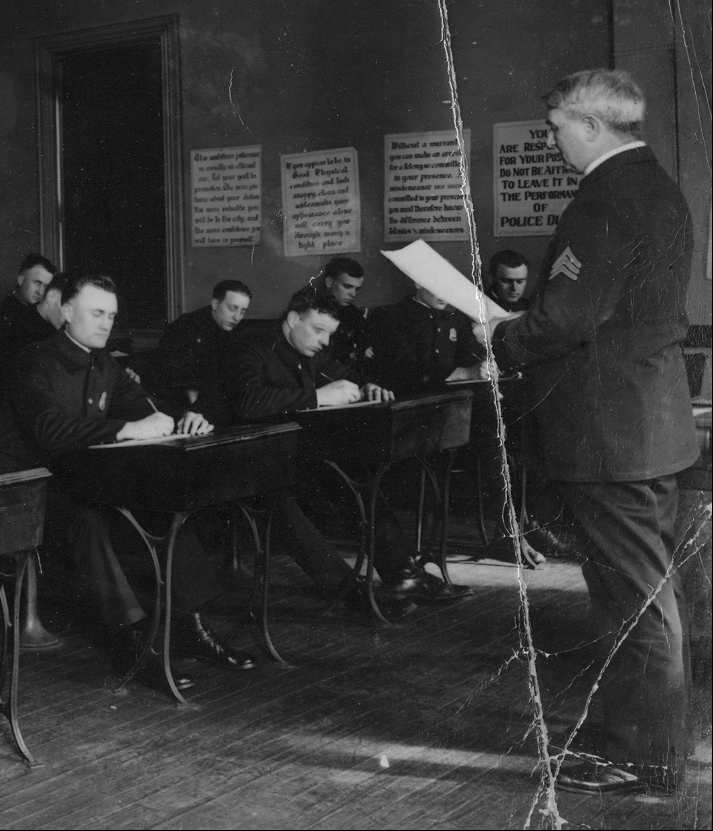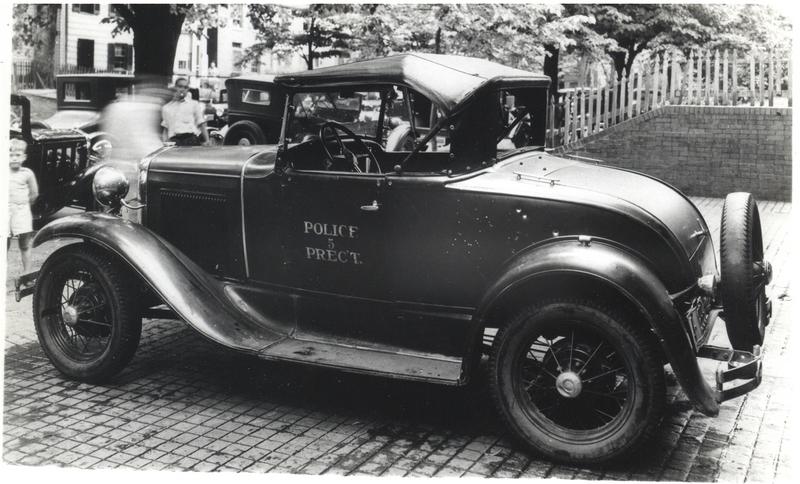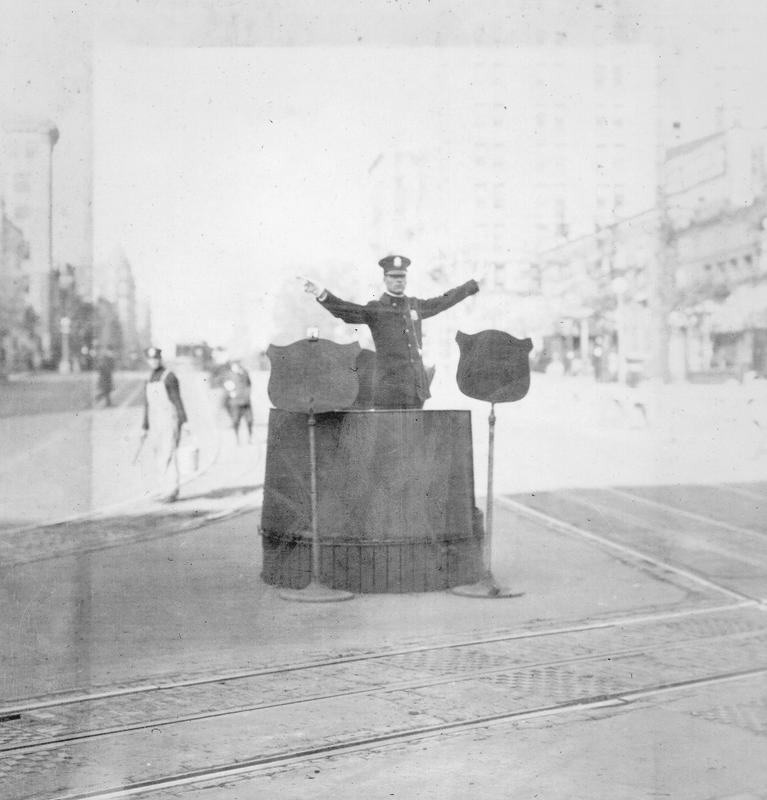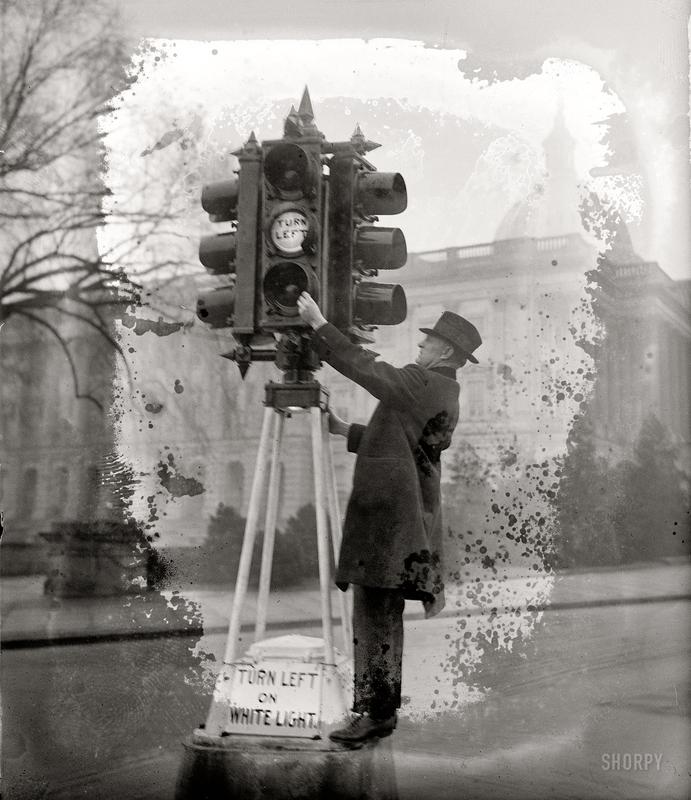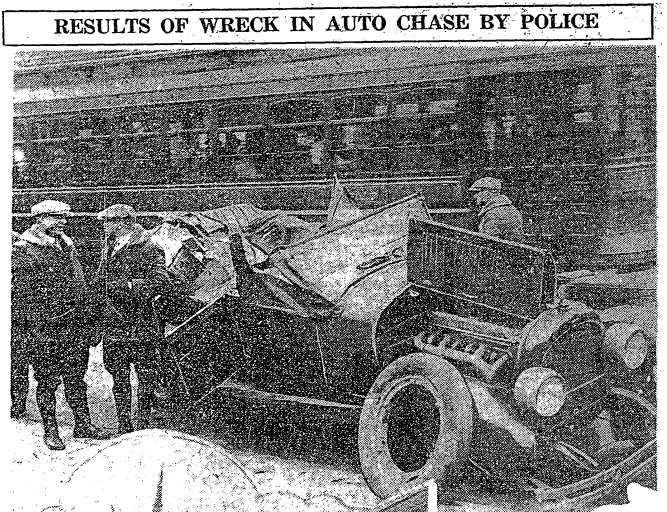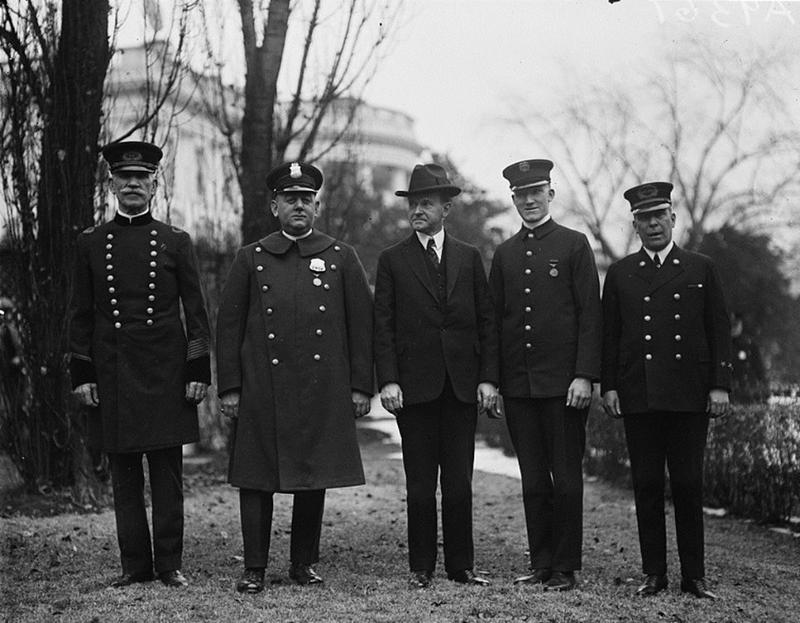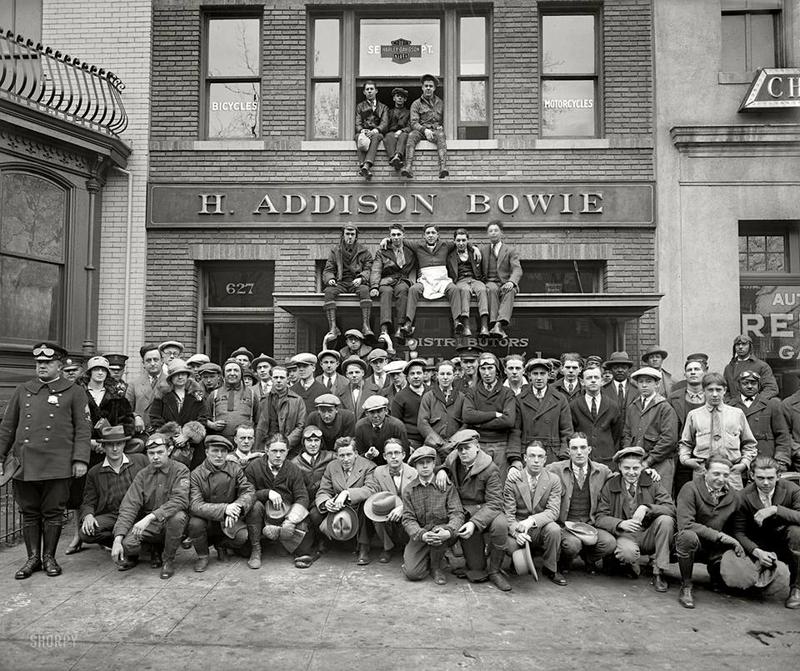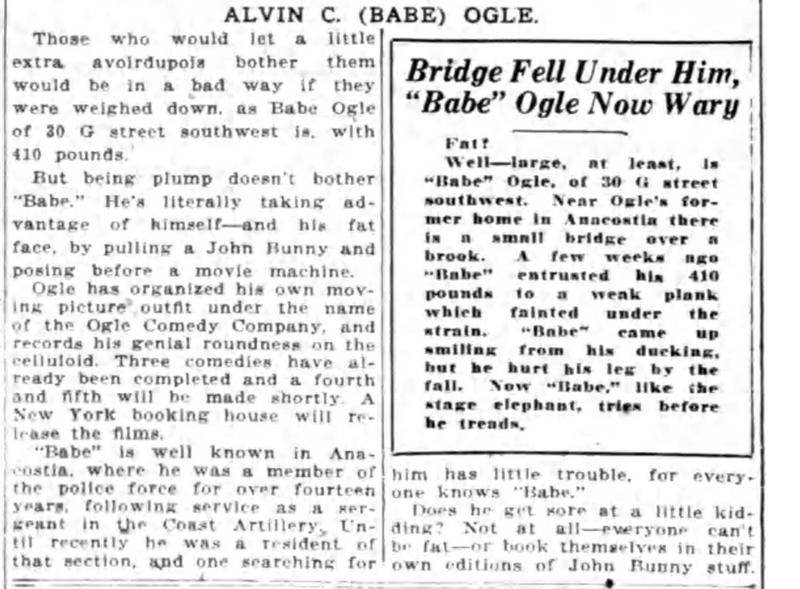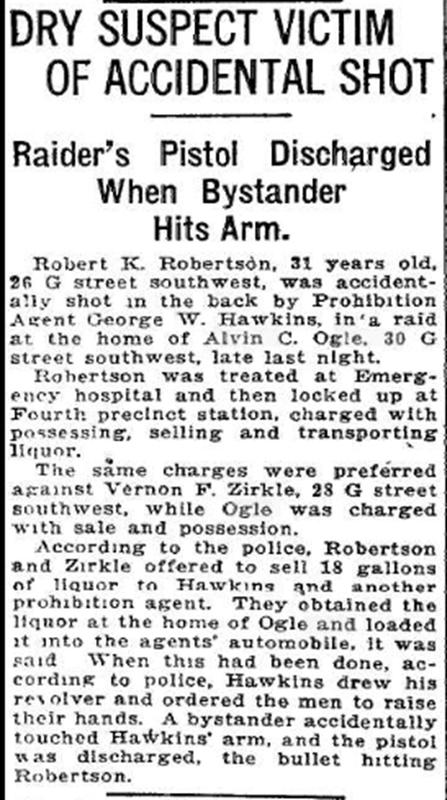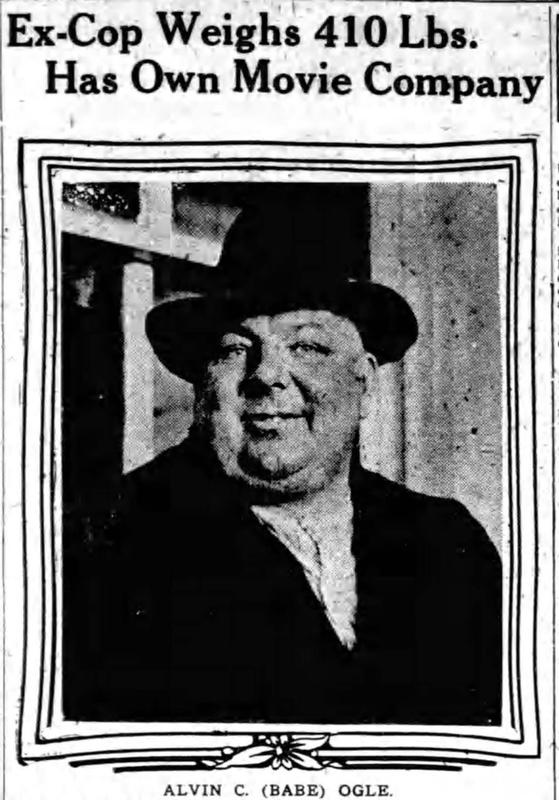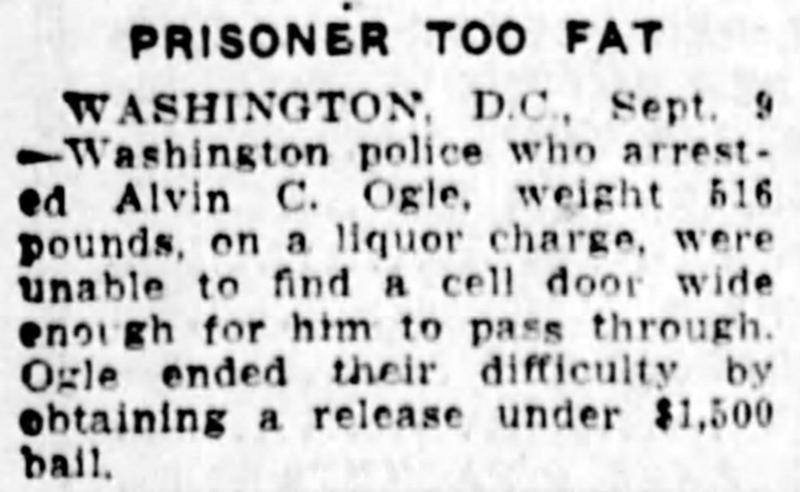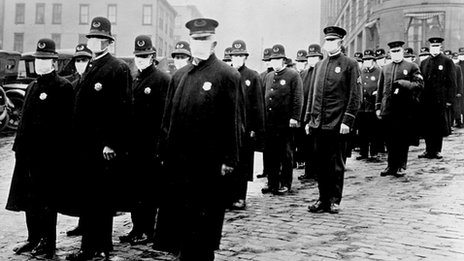Washington D.C. Metropolitan Police M.P.D.
1920 to 1929
American Professional League Formed - Prohibition Takes Effect - First Radio Station - Unknown Soldier Buried at Arlington - KKK March in Washington
Mickey Mouse is Born - First Scheduled TV Program Broadcast -
1920 to 1929
1926 - Officer Raymond V. Sinclair, who would later die in the line of duty, recorded 3,482 arrests (traffic citations counted as arrests). That was close to an average of 11 tickets or actual arrests a day, (MPD).
 | ||||||
M.P.D. Motorman Marcel Caussin
This is a 1920's photo of Motorman Marcel Caussin who fled from France to America after deserting from the French Navy. He then joined and became a U.S. Marine where he became a boxing champ on their boxing team. Although Marcel was an Olympic Champion he was unable to attend the Olympics due to having deserted. While in the Marine Corps Marcel was credited with taking the Army mule which caused a good amount of disruption. Marcel was in the marching band while in the U.S.M.C. as well as the M.P.D.
It seems Motorman Caussin was one to take chances.... One might wonder if that had anything to do with him having been hit by a vehicle while on the M.P.D. motorcycle. The headline is said to have read, " Little Hope For D.C. Motor Man".
This is a copy of your old style photo that was colored in with paint. My father use to do this with his photos that he would take using a Q-tip or tooth pick. It is an old style of coloring the photos.
BlackSheep Productions 2009
This is a 1924 M.P.D. history book, I have photo copies for trade.
M.P.D.'s fashions for the times..
1925 D.C. Metropolitan Police Scout car riddled with bullet holes
Photo provided by the M.P.D.
Photo provided by the M.P.D.
Booze confiscated in the 1920's
1920's M.P.D. Officer under his traffic police umbrella.
Photo provided by the M.P.D.
1920's M.P.D. Classroom
Photo provided by the M.P.D.
Photo provided by the M.P.D.
M.P.D.'s 5th precincts patrol car 1925
Photo provided by the M.P.D.
M.P.D. Traffic Officer - 1920's
January 5, 1926.
Washington, D.C. “Traffic Director Eldridge inspecting new lights.” National Photo Company Collection glass negative.
This might make you think twice about stopping at a red light … well, maybe not. Nevertheless, it’s an amusing read on the terrors of driving in 1927. The article below is from the Washington Post on March 15th of that year.
The spectacular career of the “traffic light robber,” which began a week ago, came to an abrupt end yesterday. Today James Steele, colored, 24 years old, of Cambellton, Fla., who admitted to police he was the robber, is behind bars at the First precinct station awaiting court action on four charges of robbery.
Credit for capture of the highwayman is due to Jack Wolfe, police headquarters chauffeur, and Detective Henry M. Jett, of the headquarters automobile squadron. they were driving on Massachusetts avenue near Seventeenth street northwest, in a police car, when Wolfe espied a man who answered the description of the robber.
“That guy looks good,” he remarked to Jett as the car was brought to a halt. Both alighted and approached the man. As they did so, police say, the man drew a hand from his coat pocket and threw an open knife to the street. The other hand he thrust deep into his pocket as if he held a gun. He warned the policemen:
“You’d better keep away from .”
With drawn revolver, Wolfe rushed at the negro, and he and Jett overpowered him. Returning to headquarters the suspect admitted he was the man they sought. A broken piece of automobile spring and pocket knife were the weapons the negro used in the robberies, he told police. Detective Jett returned to work Sunday after a three-week illness.
Steels’ robbery idea–that of leaping into an automobile awaiting a green signal light–came to him one day as he walked on Massachusetts avenue, he said. He had no fixed residence and came here a few weeks ago from Florida.
A week ago, he told police, he decided to put his idea into operation. At Thirteenth and Massachusetts avenue, he claimed Chester M. Wright, English language secretary of the Pan-American Federation of Labor, as his first victim. While Mr. Wright was awaiting the green signal light, Steel said he stepped into the automobile and, holding the spring in his pocket to resemble a revolver, forced the autoist to drive to seventh street and Florida avenue northwest, where he was robbed.
The operation was so successful that two days later, the “traffic light robber” repeated the method on David Luttrell, 3018 Porter street northwest, getting into his car at Eighteenth street and New Hampshire avenue, and forcing him to drive to Seventh and T streets.
The third victim, Thomas Shanley, 3808 T street northwest, was accosted at the scene of the robber’s capture Saturday night and the same tactics were pursued. Twelve hours later, Capt. William R. White, U. S. A., of the Carlo hotel, drove to Seventeenth street and Massachusetts avenue, and he, too, was victimized. Capt. White attempted to repulse the negro, and the robber slashed his wrists.
From his four victims, Steele obtained only $24.59 in cash and jewelry. Shanley contributed 50 cents to the robber’s treasury.
The Traffic Light Bandit
Ghosts of DC
The lost and untold history of Washington
January 5, 1926. Washington, D.C. “Traffic Director Eldridge inspecting new lights.” National Photo Company Collection glass negative.
Another Fine Story From: Ghosts of D.C.
Rum runners crash into Library of Congress
Bootleggers and rum runners. Washington had its fair share in the Roaring Twenties. Below is an article we came across from March 11, 1928 about a wild police chase of rum runners, through the streets of D.C.
Speeding at 70 miles an hour through Southeast Washington streets early yesterday morning, an alleged rum runner, closely pursued by police, lost control of his machine, which crashed into the stone wall surrounding the Library of Congress. Unhurt, the driver of the car and his companion jumped and fled, but were captured. Two hundred and forty half-gallon jars of corn whiskey were confiscated, police said.
Those held are Robert Thomas Burgess, 32 years old, charged with reckless driving, illegal possession and transportation of liquor, and Patrick E. Foley, transporting and possessing.
They were captured by Sergt. George M. Little, member of the police flying squadron, and Robert F. Cornett, Federal dry agent, who was recently exonerated by a Baltimore Federal court in the killing of Gundlach, St. Marys County, Md., farmer.
The chase began when the “dry” squad stationed themselves at the District line, on the Marlboro pike, to await the arrival of the suspected liquor car. In a previous skirmish, the machine had escaped, Sergt. Little had said.
Their quarry flashed past at a high rate of speed, and the police car swung into pursuit, which led through Alabama avenue to Good Hope road, and Naylor road to Pennsylvania avenue southeast.
Swerving to avoid wrecking a milk wagon at Second and B streets, the driver of the fleeing car lost control and it plunged into the wall, from which it glanced to an electric light pole, about 200 feet distant. Mowing down the pole the automobile again collided with the wall, and bounded back into the street, where it came to a stop against the curbing.
The Washington Herald 14th Jan 1921
ALVIN C. OGLE:
ALVIN C. OGLE served from 1906 until 1919 and was retired due to having grown to heavy to perform patrol duties. Ogle was appointed to the Metropolitan Police Department on March 26th, 1906. He was promoted to Private 2nd Class on March 26, 1909 and Private 3rd Class on March 26th, 1911. He was not however, a particularly careful officer and was brought before the trial board eleven times and fined or reprimanded on each occasion. Private Ogle was retired on a pension of $45 a month on April 1st, 1919 as the result of having grown to heavy to perform his patrol duties. His pension was discontinued on February 26th, 1924 after he was found in violation of the prohibition laws. Alvin was so large he was unable to be fit into a Paddy Wagon for transport.
In addition to the above Newspaper article...
Washington Post December 7th 1923
The Winnipeg Tribune, 9 Sep 1927
The information on Mr. Ogle was provided to me by Anne Clayton. Anne was a Detective with the MPD.
2014 isn't the first time America has had medical issues. Here is the M.P.D. in 1921 fighting nasty illnesses..
For more information on the above picture click on the link below.
